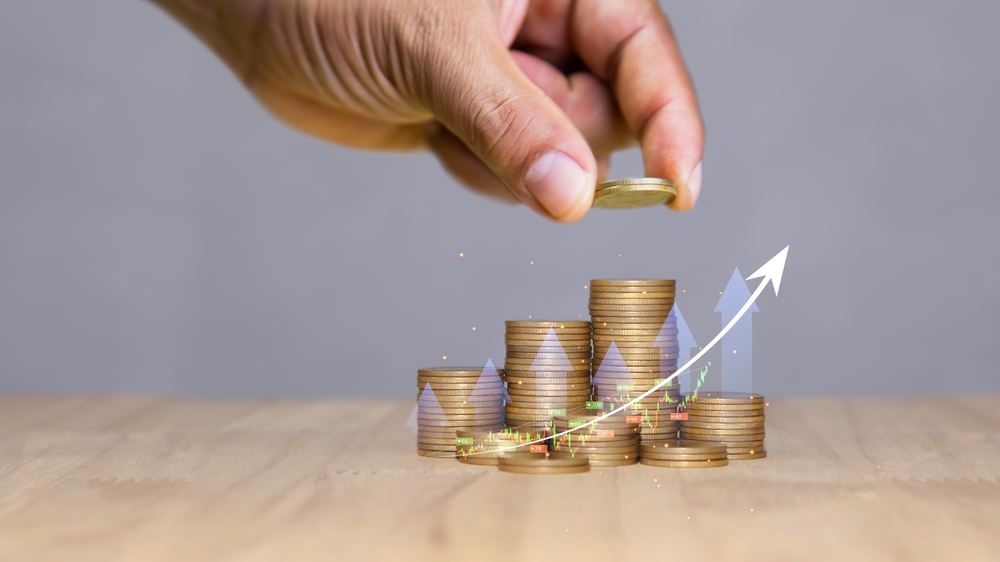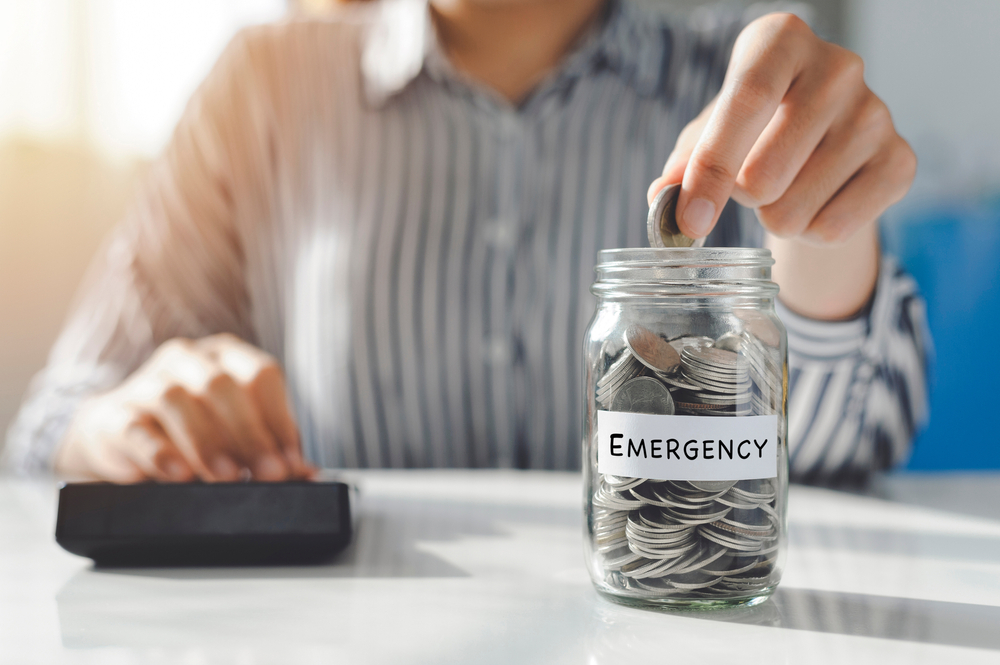It’s easy to overlook the small changes that can lead to significant financial transformation. That’s why we’ve curated a list of tiny investments that have the potential to reshape your financial future. These are not grand gestures; they’re simple, actionable steps that can quietly pave the way to a more secure and prosperous tomorrow. So, whether you’re a savvy investor or just beginning your financial journey, these thoughtful strategies will guide you toward a more financially empowered life. Let’s dive into these 14 tiny investments that can make a big difference.
1. Start a Micro-Savings Account

Opening a micro-savings account can be a game-changer for your finances. This type of account allows you to save small amounts regularly without even noticing the money leaving your wallet. According to a study by the Consumer Financial Protection Bureau, people who set up automatic savings plans often have more financial confidence and security. The beauty of micro-savings is that they’re easy to set up and maintain, offering a seamless way to build a financial cushion. Over time, these little deposits accumulate into a significant sum, offering you peace of mind and financial leverage.
With micro-savings, consistency is your friend. You don’t need to save large amounts to see a difference; the key is to save regularly and let compound interest work its magic. Many banks and financial apps make it simple by allowing automatic transfers from your checking account. This way, you’re investing in your future without feeling the pinch of missing funds in your day-to-day life. It’s a painless method to cultivate financial discipline and security over time.
2. Invest in a Quality Planner

Investing in a quality planner can transform how you manage your time and finances. A good planner will help you track expenses, set financial goals, and organize your schedule, which indirectly impacts your financial health. When you have a clear overview of your commitments and spending, you’re less likely to make impulsive financial decisions. This small investment encourages you to be more mindful, fostering accountability and awareness. A planner is not just a tool; it’s a partner in guiding you toward your financial aspirations.
Incorporating a planner into your routine also helps prioritize tasks and manage stress. When your life is less chaotic, you’re better equipped to handle financial challenges with a clear head. The act of writing things down can be therapeutic, allowing you to visualize your goals and the steps necessary to achieve them. Moreover, planners now often come with sections dedicated to financial tracking, making it easier to integrate this habit into your life. This investment perfectly marries organization with financial wellness.
3. Try Fractional Investing

Fractional investing allows you to invest in stocks or funds based on the amount of money you have, rather than the full price of a share. This democratizes investing, making it accessible to those who may not have large sums to invest initially. According to Investopedia, fractional shares enable you to diversify your portfolio with less capital, reducing risk while accessing potentially lucrative markets. It’s a savvy way to dip your toes into the investment world without feeling overwhelmed. By starting small, you can gradually increase your investment as you become more comfortable.
The process is straightforward and can often be done through various investment apps that facilitate easy access to the stock market. This approach encourages you to learn the ropes of investing without the pressure of substantial financial commitment. As you gain confidence, you can explore different stocks and sectors, broadening your financial horizons. The key is to start with what you can afford, and over time, let your investments grow and create wealth. Fractional investing is a smart step toward building a more robust financial portfolio.
4. Buy Reusable Items

Switching to reusable items isn’t just an eco-conscious decision; it’s also a financially savvy one. By investing in quality reusable products like water bottles, coffee cups, and shopping bags, you save money in the long run. These small changes reduce the need for constant replacements, leading to lower spending on disposable items. This approach exemplifies how mindful consumption benefits both your wallet and the environment. Over time, you’ll notice the savings add up, ultimately putting more money back into your pocket.
Additionally, adopting reusable items encourages a more mindful lifestyle. You’re less likely to make impulse purchases when you have reliable alternatives on hand. This shift in perspective can lead to more thoughtful spending habits overall. Plus, many retailers offer discounts for bringing your own bags or cups, further incentivizing this investment. It’s a small change with a substantial impact, contributing to a healthier financial and environmental future.
5. Educate Yourself with Online Courses

Investing in your education through online courses can significantly enhance your financial prospects. Platforms like Coursera and Udemy offer affordable courses on financial literacy, investing, and personal finance. A study by the National Bureau of Economic Research found that people who receive financial education tend to make better financial decisions. By expanding your knowledge, you’re equipping yourself with the tools needed to navigate the complexities of financial management. This investment in yourself can lead to better budgeting, smarter investments, and ultimately, a more secure financial future.
The beauty of online courses is their flexibility; you can learn at your own pace and focus on topics that interest you. Whether it’s mastering budgeting or understanding stock markets, there’s a course for everyone. These insights can translate into real-world benefits, helping you make informed financial decisions. Plus, gaining new skills can open up additional income opportunities, further boosting your financial situation. Online courses are a valuable investment in your personal and financial growth.
6. Start a Side Hustle

Embracing a side hustle is a proactive way to boost your income and financial security. Whether it’s freelancing, selling handmade goods, or offering a service, a side hustle provides additional income streams. This extra cash flow can go toward paying off debt, saving for a dream vacation, or investing in long-term goals. Starting small allows you to test the waters and adjust as you find what works best for you. A side hustle not only enhances your financial situation but also empowers you to pursue your passions.
Moreover, a side hustle can be a creative outlet that enriches your life beyond financial gains. It offers the flexibility to work on your terms and explore different industries. Over time, what starts as a small endeavor could evolve into a significant source of income. The key is to leverage your skills and interests, making the hustle both enjoyable and profitable. This investment in your future is as much about personal fulfillment as it is about financial growth.
7. Open a High-Yield Savings Account

A high-yield savings account is a simple yet effective way to grow your money with minimal effort. These accounts offer higher interest rates than traditional savings accounts, allowing your savings to accumulate more quickly. According to Bankrate, the interest rates on high-yield savings accounts can be significantly higher, providing better returns on your deposits. This means your money works harder for you, helping you reach your financial goals faster. All it takes is a small initial deposit to open an account, and you’re on your way to more substantial savings.
Choosing the right high-yield savings account involves researching different banks and their offerings. Many online banks provide competitive rates and require no monthly fees, making them an attractive option. As your savings grow, you’ll have a better financial cushion for emergencies or future investments. The key is to start with what you can afford and contribute regularly to maximize the benefits. This simple investment strategy can lead to impressive returns over time, bolstering your financial future.
8. Use Cashback Apps

Integrating cashback apps into your shopping routine can lead to substantial savings over time. These apps offer a percentage of your purchase back in cash, effectively lowering the cost of your everyday expenses. By using apps like Rakuten or Honey, you benefit from deals and discounts you’d otherwise miss. This micro-investment doesn’t require upfront costs, only the commitment to use the app consistently. It’s a straightforward way to stretch your budget and make your money go further.
The savings from cashback apps can accumulate quickly, especially on larger purchases. Over time, these small amounts add up, providing extra funds for savings or other financial goals. Additionally, these apps often feature exclusive partnerships with retailers, offering opportunities for even greater savings. By making cashback apps a part of your shopping routine, you’re turning everyday spending into a rewarding financial strategy. This small habit can lead to significant financial benefits in the long run.
9. Cook More Meals at Home

Cooking more meals at home is a financially and nutritionally wise investment. By preparing your own meals, you save money that would otherwise be spent on dining out or ordering takeout. This habit encourages healthier eating, allowing you to control ingredients and portion sizes. It may require an initial investment in groceries and cooking tools, but the long-term savings are substantial. Plus, developing cooking skills can be a rewarding and enjoyable experience.
Moreover, meal planning and home cooking reduce food waste, another smart financial move. By buying only what you need and using leftovers creatively, you make the most of your grocery budget. This approach encourages mindful consumption and fosters a more sustainable lifestyle. Cooking at home can also be a communal activity, bringing family or friends together. Ultimately, this small change supports both your financial health and overall wellbeing.
10. Set Up Automatic Bill Payments

Automating your bill payments is a small step with significant financial benefits. Setting up automatic payments ensures you never miss a due date, avoiding costly late fees. This simple tweak to your financial routine also helps maintain a healthy credit score, which is vital for future financial endeavors. With one less thing to worry about, you can focus on other aspects of your financial planning. Automatic payments streamline your finances, making budgeting and managing money more straightforward.
In addition to saving money, automatic payments reduce the stress of managing multiple due dates. They add an element of predictability to your financial life, allowing you to plan more effectively. Many banks and service providers offer this feature at no extra cost, making it an accessible investment for everyone. By taking advantage of automation, you’re simplifying your financial responsibilities and ensuring consistency. This minimal effort can have a lasting positive impact on your financial stability.
11. Buy in Bulk

Buying in bulk is a practical investment strategy for saving money on frequently used items. By purchasing larger quantities, you often pay less per unit, leading to significant savings over time. Bulk buying is especially effective for non-perishable goods like toiletries, cleaning supplies, and pantry staples. This approach minimizes the frequency of shopping trips, saving you both time and money. It’s an upfront investment that delivers continuous returns through reduced expenses.
To maximize the benefits of bulk buying, it’s essential to plan and store items properly. Ensure that you have the space to accommodate bulk purchases and that the items won’t expire before use. This method encourages strategic shopping, focusing on long-term savings over short-term convenience. Involving family or friends can also be an opportunity to share costs and storage, making it more manageable. Overall, buying in bulk is a smart and simple way to enhance your financial efficiency.
12. Prioritize Debt Repayment

Prioritizing debt repayment is a foundational step toward financial freedom. By focusing on paying off high-interest debt, you reduce the amount you owe faster, saving money in interest payments. This strategic approach involves making more than the minimum payments or targeting one debt at a time, known as the snowball or avalanche method. Achieving debt freedom provides not only financial relief but also psychological comfort, as you’re no longer burdened by looming obligations. It’s a disciplined investment in your financial health that pays off substantially over time.
Creating a debt repayment plan involves assessing your debts, interest rates, and potential savings from accelerated payments. With a clear plan, you’re more likely to stay motivated and track your progress effectively. This financial focus can also improve your credit score, opening doors for better borrowing terms in the future. As you pay down debt, you free up resources for savings or investments, further strengthening your financial position. Committing to this path is an empowering move toward a more secure financial future.
13. Build an Emergency Fund

Building an emergency fund is a crucial investment in your financial security. This fund acts as a financial safety net, covering unexpected expenses like medical bills, car repairs, or job loss. Ideally, it should cover three to six months of living expenses, though starting with a smaller goal is perfectly acceptable. Having an emergency fund offers peace of mind, allowing you to handle crises without derailing your financial plans. It’s a small, steady investment that ensures stability when life throws curveballs.
To create an emergency fund, start by setting aside a specific amount from each paycheck. This regular saving habit, however modest, will gradually accumulate into a significant resource. Consider keeping your fund in a separate, easily accessible account to avoid the temptation of dipping into it unnecessarily. Building this fund is about consistency and commitment, even if it starts with just a few dollars a week. Over time, this financial safety net becomes a cornerstone of your financial strategy.
14. Regularly Review Your Financial Goals

Regularly reviewing your financial goals ensures that you stay on track and make adjustments as needed. Life changes and so do your financial circumstances, making it important to reassess your goals periodically. This practice involves evaluating your current financial status, progress toward goals, and any new priorities that have emerged. Regular reviews keep you focused, motivated, and aligned with your long-term aspirations. It’s a small investment of time that can lead to significant improvements in your financial strategy.
During these reviews, take the opportunity to celebrate milestones and identify areas for improvement. This reflection allows you to refine your approach, whether it’s adjusting savings targets or exploring new investment opportunities. Being proactive about your financial goals also fosters a sense of control and empowerment. It reminds you of your broader vision and the steps necessary to achieve it. Regularly revisiting your goals is a dynamic process that ensures your financial journey remains purposeful and fulfilling.
This article is for informational purposes only and should not be construed as financial advice. Consult a financial professional before making investment or other financial decisions. The author and publisher make no warranties of any kind.








